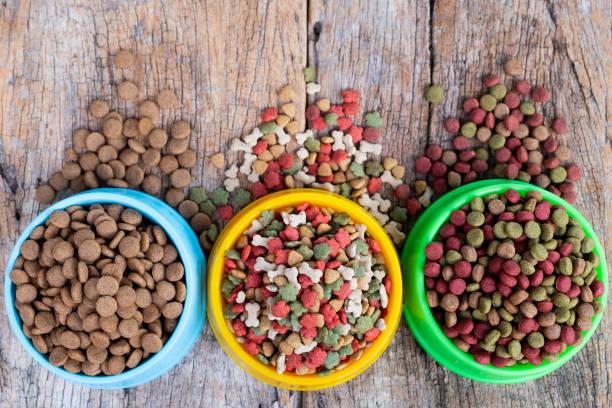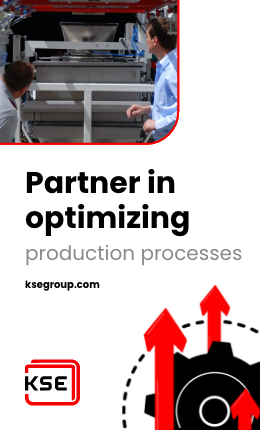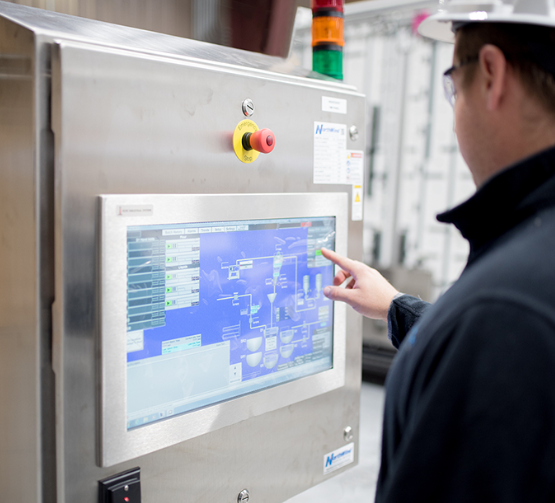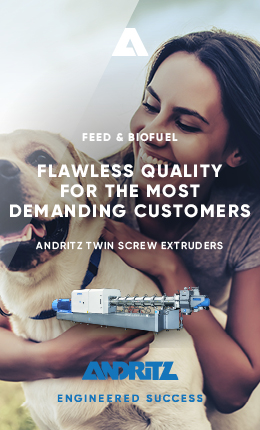The extrusion and drying phases of pet food production create three challenges that must be balanced with production efficiencies and economics:
- Managing the moisture levels in pet food to support consumption preference.
- Optimizing production capacity to achieve efficiency and economics.
- Consistently producing safe, high-quality food with an adequate shelf life.
As extreme thermal conditions during extrusion and drying processes reduce moisture levels during pet food production, the result can be an adverse effect on consumption preference. And while simply adding more moisture or lesser drying during processing may seem like a logical solution, additional moisture can negatively affect shelf life stability of the finished product. Achieving the proper balance of moisture content, kibble throughput/production capacity and pet food quality can support safety and quality parameters, without sacrificing production efficiencies. This article examines approaches to achieve such a balance of quality product, efficient production and economics.
Increasing production capacity and efficiency
While optimizing moisture levels in pet food kibble can be a complex and delicate process, studies show there is an opportunity to increase production capacity and/or improve energy efficiency. Achieving one or both of these production objectives can result in improved economics for the pet food producer. As a research-based organization, Trouw Nutrition, a Nutreco company, conducts studies to evaluate innovations that support safe, high-quality pet food and production economics.
A good example of this research comes from a commercial pet food study. A study measured how adding a combination of buffered and non-buffered organic acids with surfactants in the conditioner at two different inclusion rates impacted production parameters. Two dosages of Fylax® Forte-HC liquid were added at the preconditioning stage while maintaining production conditions. As illustrated in Table 1, applying the product with the dryer temperature set at 120◦C showed a significant increase in throughput while reducing the moisture percentage and water activity (AW). The results of this study demonstrate an opportunity for pet food producers to lower the temperature or increase the dryer throughout speed, thus reducing energy use and/or improving the efficiency of the production process.

Improved production efficiencies can also be seen in a second study. In this study, the production speed was accelerated to 11,000 kg/h, the dryer temperature was set between 105-110◦C and AW was at a maximum of 0.70, in accordance with the producer's quality standards. The results presented in Table 2 show a maximum increase of 0.08 in AW and a 2.81% increase in moisture. Even though the AW and moisture levels were higher, the Fylax Forte-HC liquid's mould control properties proved effective. The study showed shelf life was increased by 72% at the lower inclusion rate compared to a control treatment. And at the higher inclusion rate, the results were even more dramatic–shelf life increased 171% compared to a control treatment. These beneficial effects can largely be attributed to a patent-pending technology – ActiProp® – included in Fylax ® Forte-HC liquid. The inclusion of ActiProp is aimed at helping achieve quality kibble and production efficiencies by inhibiting mould growth, prolonging shelf life, protecting the nutritional value of petfood, retaining kibble's moisture content and improving production capacity.

In addition to the studies noted above, further studies conducted in commercial production facilities around the globe have shown consistent results. In fact, when the dryer temperature was reduced by 14◦C, the percentage of moisture increased while the AW value remained below the target of 0.60 (Table 3 and Figure 1).
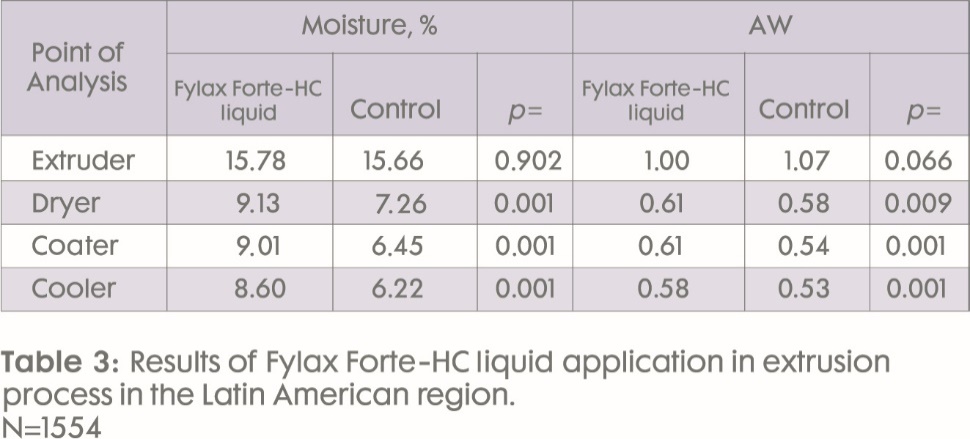
Supporting safety and shelf life
As the commercial environment may require pet food to support a shelf life up to 24 months, assuring pet food longevity and kibble quality can pose stability challenges. A mould inhibitor should be added during preconditioning to help assure shelf life. Again, the propionic acid included in ActiProp® technology can play a role in supporting shelf life. After the extreme environment of the extruder, adding a mould inhibitor blend with a stable and highly concentrated blend that offers a minimum of 95% retention of propionic acid can ensure a prolonged effect throughout the kibble's shelf-life. The mould inhibitor discussed above (Fylax® Forte HC liquid) has been proven to withstand the high temperatures of extrusion.

During preconditioning, the homogenous distribution of added moisture and organic acids can be supported by surfactants and emulsifiers which reduce water's surface tension. This reduction allows the moisture and organic acids to penetrate more deeply into kibble particles, thus increasing the total fixed water in kibble and resulting in a lower free water level. Understanding how these processes work during feed production informed developers' decision to add ActiProp® technology to Fylax Forte-HC liquid. The technology's propionic acid, and emulsifiers along with a buffering agent work together to achieve a prolonged effect that can stand up to the extended shelf life requirements of commercial environments. The phytochemical compounds along with the propionic acid in the ActiProp ® technology have proven to deliver a synergistic effect.
Effective application is essential
Even the most sophisticated Pet Food production technologies will not deliver the desired results if dosing or application are not aligned with the production environment. With this in mind, Trouw Nutrition developed dosing equipment to allow for accurate, safe and continuous dosing of a mould inhibitor during pet food production. Dosing equipment attuned to the variances within the production environment ensures that the blend of buffered and non-buffered organic acids and surfactants is effectively distributed. As every production environment is unique, it is important that equipment is adjustable. Dosing equipment developed by Trouw Nutrition mixes the mould inhibitor with water used in the preconditioning process and then the product is continuously sprayed onto feed materials in the preconditioner.
Investing in consistent production performance
There are several benefits associated with optimizing moisture penetration in pet food kibble. These benefits include unform starch gelatinization, better starch availability and improved palatability of the finished pet food. An adequate product properly applied can help pet food producers achieve the ideal balance of moisture levels in kibble while potentially reducing the amount of energy consumed during the extrusion and drying phases. As studies show, all of these production efficiencies can contribute to improved production economics.
Author: Trouw Nutrition
You could be interested: Odor control technologies comparison
Manufacturing Process




 5.0
5.0
22/09/2023





